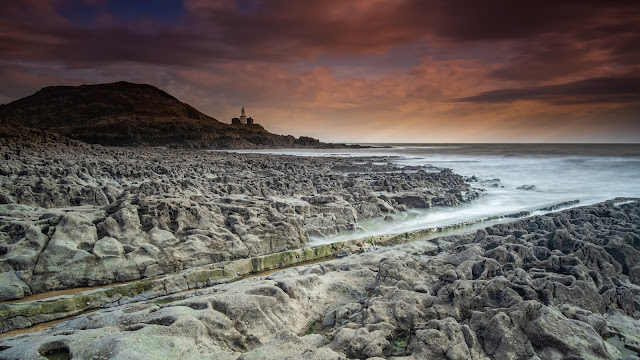crash course 2: composition
When it comes to how you want an image to look, it is of course entirely personal. What you like may not appeal to someone else and vice-versa. If you’re happy with the scene in front of you when you press that shutter, then that’s enough.
There are though some “rules” that can help to ensure your image looks well thought out and balanced. And might also appeal to someone who may want to buy a photograph.
When I approach a scene, I look for a number of things that can turn a nice view into a nice image. Remember though that a pretty view doesn’t always lend itself to a stunning landscape image, and that there is beauty in everything you see – you just need to use your tools to bring that beauty out.
Having an eye for a photograph is far more important than possessing any technical skill. Skills can be easily learned; an eye for an image much less so.
Personally, I like my images to broadly conform to the principle rules of landscape photography – but not always. Sometimes I’ll deliberately break the rules to get a picture I like.
Before examining some of the basic rules more closely, there are of course certain basics that should be adhered to. Things like getting your horizon straight, not cutting part of the main subject off (unless done for artistic purposes) and keeping messy stuff out of the frame if you can are all good starting points. Oh, and avoid getting your fingers in the shot!!
The rule of thirds:
When I view a scene, I like to picture it with a grid (in fact, my camera’s viewfinder and screen have a built-in overlay) so I can place the main subject on a point where lines of the grid cross. Placing the main object on a “third” and then using negative or empty space to emphasise it is probably the most used rule.
In general, this produces a more pleasing image than just plonking whatever you’re photographing plum in the middle of your frame.
In the example above, I placed the standing stone on the left-hand side of the image with plenty of empty space around it. This emphasised the loneliness I felt at the location. I could have shot this in a portrait orientation and filled the frame with the stone but that would just be a record; a snapshot and not a well thought out landscape image.
Of course, sometimes the subject just cries out to be placed in the centre of the image.
In this example, it just “works”. Though it would also be just as effective with the lighthouse on a third. I just preferred this composition. I also pictured this shot as a square rather than a rectangle when I set it up in camera.
Leading lines:
Composing an image with a leading line is a way of drawing the viewer’s eye logically through an image, taking in all its aspects rather than just concentrating on the main subject.
Leading lines can be subtle as in the above image, or more obvious. But their job is the same – to lead the eye through the image. Here, the driftwood leads the eye from the bottom right, through to the rocks, onto the waves and the golden setting sun and sky. The image would have worked without it but is enhanced with its presence.
The above image’s leading lines are a little more obvious, but achieve the same overall results.
A leading line doesn’t need to be straight. It can take the form of an “S” like curve.
Here, the curve leads the eye from bottom left out to the sea and then back in towards the lighthouse, taking in all the image and not just the main subject, the lighthouse, which as you can see is placed roughly on a third and not in the centre of the image.
Another form of leading line, or compositional tool, is the “Fibonacci Curve” where various elements of a scene are placed at various points of the image to draw the eye through it.
Some cameras enable you to overlay a curve over your image in the viewfinder to help. But the above example illustrates a Fibonacci Curve in practice – picture a circle in the bottom left corner, opening up into the branch and continuing back over the bridge and returning to the far wall in the centre third of the image.
The rule of “odds”:
Broadly speaking, an odd number of items is more pleasing on the eye than an even number. Of course, this is not always possible to achieve in nature. I mean, if there are four trees in a scene, short of breaking out a chainsaw there’s not a great deal you can do about it.
For the above image, I wanted to be sure I had an odd number (five in this case) of upright structures in my scene. I just don’t think it would have been as pleasing with four, and certainly not with six as that would have been too cluttered.
The “during the meanwhilst sandwich”:
I can’t claim any credit for this, but it is something of a trademark in my photography. It broadly incorporates the rule of thirds and the rule of odds, creating a three-tiered sandwich of elements in an image. I find it particularly useful where there isn’t a definite focal point in the scene, and it helps me to get creative with filters and play with light.
I usually employ it with sky, sea and land but not always as you can see above, where I’ve incorporated the trees in the background, the wheat lit by the setting sun and then the base of the crop in the shade to create my three layers.
Remember to not always look at things at eye level. Get down low or shoot at interesting angles for a different view on the world.
Remember to not always look at things at eye level. Get down low or shoot at interesting angles for a different view on the world.
For this shot, I actually rested my camera on the ground to get really low down and create an interesting perspective.
The most important rule though is to shoot to please yourself and no-one else (unless you’re selling images for a living that is!), and to try to develop a look personal to you by combining composition and exposure (which we’ll touch on later).
There are numerous other rules, but remember rules are always there to be broken. The image above breaks petty well all of them!











Lovely photographs all of them! :D (the same rules apply in all the art books I've ever read, so obviously photography IS art!)
ReplyDeleteGreat images as always Nick...and excellent accompanying examples of the well thought out text..thanks
ReplyDelete